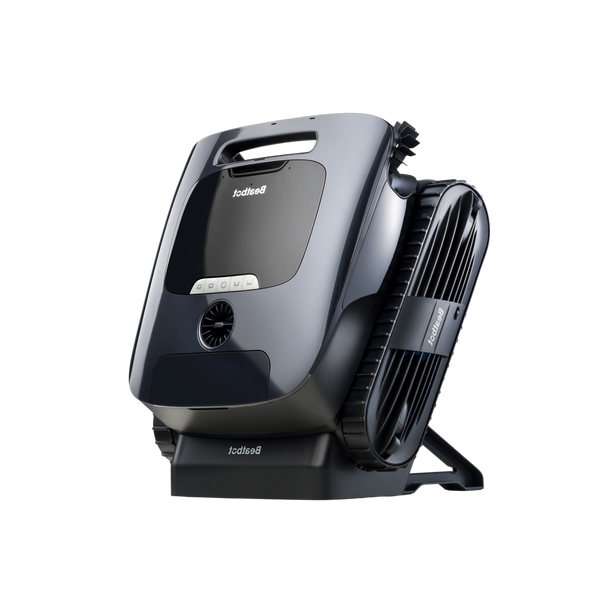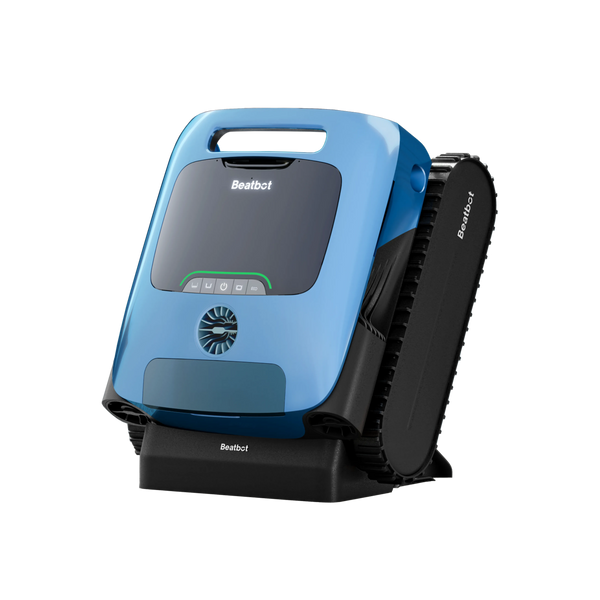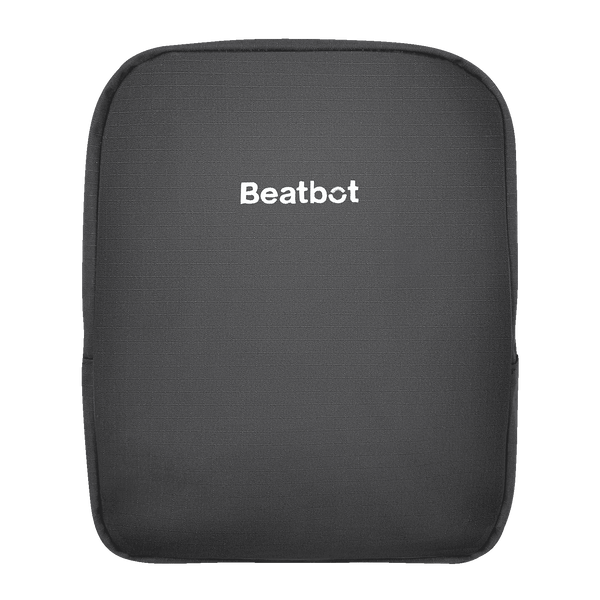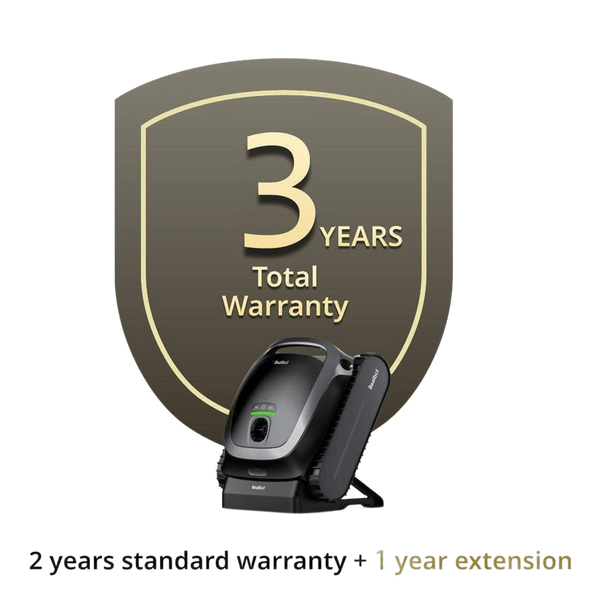Discover the Benefits of Aquatic Exercises for Fitnes
Aquatic exercises are an excellent way to enhance fitness regimen by incorporating the natural resistance of water. These exercises benefit people at all levels. Let's explore some of the best aquatic exercises that help to achieve health and fitness goals.
Table of content
Unraveling Aerobic Exercise: What It Is and How It Boosts Your Health
Aerobic exercise, often called cardio, involves continuous and rhythmic physical action that elevates your heart rate. It's all about getting your blood pumping and your respiratory system working harder to deliver oxygen throughout your body. Think of activities like brisk walking, running, cycling, or swimming.
Health Benefits of Aerobic Exercise
Heart Health : By engaging in such exercises regularly, you can significantly bolster your cardiovascular system. This type of physical activity strengthens your heart muscle, improves circulation, and can lead to a healthier blood pressure level.
Weight Management : Aerobic exercises are excellent for burning calories. Regular practice can help maintain a healthy weight by burning fat and boosting metabolism.
Mood Enhancement : The rhythmic movements and increased oxygen intake encourage the release of endorphins—the body's natural mood elevators. This can lead to reduced feelings of stress, anxiety, and depression.
Enhanced Stamina : Over time, your endurance will improve, making daily activities easier and less tiring. You'll find yourself with more energy as your body becomes more efficient.
Controlled Blood Sugar Levels : Regular aerobic activity can also help manage blood sugar and insulin levels, which is especially beneficial for individuals at risk of or managing diabetes.
Getting Started with Aerobic Exercise
Start simple: Begin with activities like walking or cycling, and gradually increase intensity.
Mix it up: Try different workouts to keep things interesting, such as dance classes, jogging, or even team sports.
Consistency is key: Aim for at least 150 minutes of moderate aerobic activity per week.
By adopting aerobic exercise as a staple in your lifestyle, you can unlock numerous health benefits that promote both physical and mental well-being. Whether you're just starting or looking to enhance your current routine, the rewards of regularly getting your heart rate up are plentiful.
Water Aerobics: A Cardio and Strength Workout in One
Adaptable Intensity for Every Fitness Level
Water aerobics classes are adaptable, allowing participants to adjust the intensity of their workout by altering movements and adding resistance tools. This flexibility makes water aerobics suitable for everyone, from beginners to advanced athletes.
Social and Fun Environment
Joining a water aerobics class also offers a social aspect, making exercising more enjoyable and motivating. Group settings provide a supportive atmosphere that encourages regular participation.
Consider checking out aquatic exercise classes at your local fitness center or community pool. These classes not only offer a structured workout but also provide a chance to connect with others, making the experience both rewarding and fun.
Swimming: The Ultimate Full-Body Workout
Techniques and Strokes to Enhance Performance
Mastering various swimming strokes such as freestyle, backstroke, and butterfly can help target different muscle groups, enhancing the overall effectiveness of your swimming workouts.
Mental and Physical Relaxation
Swimming is not only physically beneficial but also great for mental health. The rhythmic nature of swimming and submerging in water can make people calm, reduce stress, and improve mental well-being.
Aquatic exercises, such as swimming, offer a unique blend of benefits. Improved heart health is one of the most significant advantages. The buoyancy of water supports your body, reducing the strain on your heart while still providing a solid cardiovascular workout. This low-impact environment allows you to get your heart pumping without stressing your joints.
Moreover, exercising in water can seamlessly integrate physical activity into your life, enhancing both muscular endurance and strength . The resistance provided by water helps build muscle with each stroke and movement.
Incorporating aquatic exercises into your routine can be a holistic way to enhance both physical and mental health, contributing to a balanced and healthier lifestyle.
Deep Water Running: Low Impact, High Results
Simulation of Land Running
Deep water running provides a similar physiological benefit as running on land but without impact, making it an excellent choice for those with joint problems or recovering from injuries.

Core Engagement and Stability
This activity also requires the engagement of the core muscles to maintain an upright position in the water, enhancing core strength and stability.
Aqua Yoga: Flexibility and Relaxation in the Water
Enhances Traditional Yoga Poses
Aqua yoga modifies traditional yoga poses to be performed in the water, which can help deepen stretches and reduce the risk of muscle strains.
Accessible to Those with Limited Mobility
The buoyancy of the water makes aqua yoga particularly accessible to those with limited mobility or those who find traditional yoga challenging on solid ground.
Kickboxing in Water: An Energetic Resistance Workout
Combining Cardio and Resistance Training
Water kickboxing incorporates the cardiovascular benefits of aerobics with the resistance training of kickboxing, offering a balanced workout that builds fitness quickly.
Safe for All Ages and Fitness Levels
The cushioning effect of the water makes kickboxing movements safer and less likely to cause injury, making this workout suitable for all ages and fitness levels.
Tailoring Aquatic Exercises to Your Fitness Needs
Personalized Workouts
Trainers and instructors can help personalize aquatic exercises to suit individual fitness levels and goals better, ensuring everyone gets the most out of their water workout. For those looking to elevate their routine, consider incorporating deep-water jogging. This technique increases resistance, enhancing cardiovascular intensity and muscle engagement.
Varied Routines to Keep You Engaged
The versatility of aquatic exercises means routines can be varied often to prevent boredom and plateauing, keeping your workouts exciting and effective. Integrating intervals of deep-water jogging or using resistance tools like water weights can further challenge your body and keep your regimen fresh.
Seasonal Adjustments for Year-Round Fitness
Water workouts can be adapted seasonally, allowing for heated indoor pools in colder months and refreshing outdoor sessions in summer. This seasonal flexibility ensures that aquatic exercises can be a year-round fitness solution, accommodating varying climatic conditions and personal preferences. Embrace these seasonal shifts by adjusting the intensity of your workouts—perhaps by increasing the duration of deep-water exercises during the cooler months when the body requires extra warmth and energy expenditure.
Inclusive Options for Special Needs
Additionally, specialized aquatic classes are designed for people with particular health needs, such as arthritis or back pain, seniors, and expectant mothers.
Poolside Exercises for Enhanced Fitness
Poolside exercises are perfect for warming up before entering the water or cooling down after a session.
They can improve flexibility, increase muscle tone, and help transition the body to and from vigorous water-based workouts.
Dynamic Stretching and Mobility Work
Incorporate dynamic stretches and mobility exercises poolside to prepare your body for a swim or to cool down after your water workout. These activities enhance flexibility and minimize the likelihood of sustaining injuries.
Resistance Training with Bands
Using resistance bands for strength training on the pool deck can complement your aquatic workouts. This approach helps target different muscle groups and enhances overall strength.
Safety Tips for Aquatic Exercises
Understand Your Swimming Proficiency
Before engaging in any aquatic exercises, participants need to assess their swimming skills. Even shallow water workouts require some ability to handle oneself in water.
Warm Up and Cool Down
Like traditional land exercises, warming up before and cooling down after aquatic exercises are crucial to preventing muscle strains and other injuries.
Warm-ups can include light swimming or walking in water, while cool-downs might involve stretching exercises that can be done in or out of the water.
Use Proper Equipment
Make sure to use the correct aquatic exercise equipment designed specifically for water use. This includes water weights, foam noodles, or resistance bands made for water.
Stay Hydrated
Despite being surrounded by water, it's easy to overlook hydration during aquatic exercises.
Follow Pool Rules and Regulations
Adhering to pool rules is essential for safety. This includes walking instead of running around the pool area to avoid slips and falls, following any posted signs regarding pool depth and no-diving zones, and observing the maximum capacity limits of the pool area.

Monitor Weather Conditions
For outdoor water activities, weather conditions play a significant role. Avoid aquatic exercises in open water during adverse weather conditions such as thunderstorms, which pose a risk of lightning. Additionally, extreme hot or cold temperatures can also impact safety and comfort.
Use the Buddy System
Whenever possible, exercising in the pool with a buddy can increase safety. Having someone around provides companionship and ensures that help is at hand in case of unexpected issues like muscle cramps or fatigue.
Pay Attention to Your Body
Listen carefully to your body. Don't push through pain or discomfort. Aquatic exercises are generally low impact, but it's important to stop any activity that causes pain and seek professional advice if necessary.
Tips for Maintaining Proper Form During Aquatic Exercises
Engaging in aquatic exercises can be a rewarding way to stay fit and resilient. To ensure you're getting the most out of your workout while minimizing the risk of injury, maintaining proper form is crucial. Here are some tips to guide you:
Water Walking Basics
Start with water walking in waist-high water. As you move, swing your arms naturally, similar to walking on land. Keep these key points in mind:
- Maintain a straight back to prevent unnecessary strain.
- Engage your core by tightening abdominal muscles, which helps prevent leaning or imbalance.
- Avoid walking on tiptoes to improve stability.
Advancing to Deep-Water Walking
Once you’re comfortable in shallower water, try walking in deeper areas. Consistency in your form remains important:
- Continue swinging your arms for momentum.
- Ensure your back stays upright and core muscles engaged.
Arm Workouts with Hand Webs
Hand webs can effectively target arm muscles. Perform the following:
- Stand in waist-high water with arms relaxed.
- Keep your elbows close to your body and wrists straight as you raise your forearms to water level.
- Press down until your arms are fully extended, performing 12-15 repetitions.
Incorporating Water Weights
Water weights increase resistance and build strength:
- Begin with your arms at your sides, palms facing up.
- Bend your elbows to bring the weights to the water’s surface.
- Rotate the weights so palms face downward and push until arms are straight. Aim for 12-15 reps.
Resistance with a Kickboard
Kickboards offer a different type of resistance:
- Stand straight, and keep your feet apart for stability.
- Firmly grip the kickboard with one arm extended.
- Use controlled movements to bring it across your body and back. Perform 12-15 repetitions on each side.
Leg Training with a Noodle
Strengthen your legs using a pool noodle:
- Secure the noodle around one foot and stand against the pool edge for support.
- Straighten your leg, then bend your knee to about 90 degrees.
- Return to the original position. Complete 12-15 reps, then switch legs.
General Form Tips
- Always keep your back straight and avoid leaning excessively.
- Engage core muscles to support your lower back and maintain balance.
- Ensure movements are slow and controlled for maximum effectiveness and safety.
By adhering to these form tips, you'll enhance the benefits of your aquatic workouts while maintaining safety and efficiency. Enjoy the buoyancy of the water and let it assist in creating a more structured, effective routine.
Leveraging Pool Robots for Safer Water Workouts
Robotic pool cleaner enhance the safety of aquatic exercises by automating the cleaning of swimming pools. These devices keep the water free from debris and maintain chemical balance, which helps reduce health risks like skin irritations. For instance, our advanced
AquaSense 2 Pro, the world's first 5-in-1 pool cleaning robot, exemplifies cutting-edge pool care. It integrates water clarification functions with comprehensive cleaning capabilities—handling the water surface, waterline, walls, and floor.
The Beatbot AquaSense Pro also boasts an extensive range of industry-leading certifications that ensure the highest safety performance standards.
This allows staff to focus less on manual pool upkeep and more on overseeing safe and effective exercise sessions.

Understanding Water Walking and How to Do It
What is Water Walking?
Water walking is an effective low-impact exercise performed in a pool. It harnesses the resistance of water to help improve cardiovascular fitness, strength, and flexibility, making it ideal for individuals seeking a gentler form of workout.
How to Perform Water Walking
To start water walking, choose an area of the pool where the water reaches about waist level. This provides enough resistance for an effective workout while maintaining a comfortable stance. Here’s how to perform it:
-
Step-by-Step Instructions:
- Begin by walking across the pool, mimicking your natural land walk.
- Swing your arms in rhythm with your leg movements.
-
Tips for Proper Form:
- Avoid tiptoeing: Make sure your heels touch the pool floor to maintain stability.
- Keep your posture aligned: Maintain a straight back to support spinal health.
- Engage your core: Tighten abdominal muscles to prevent leaning forward or sideways, enhancing balance and muscle activation.
By following these guidelines, you'll maximize the benefits of water walking and contribute to a healthier, more active lifestyle.
FAQs on Aquatic Exercises
What are the best aquatic exercises for beginners?
For beginners, water walking, gentle water aerobics, and basic swimming strokes are great starting points to get accustomed to working out in the water.
What equipment do I need for aquatic exercises?
For starters, basic equipment for aquatic exercises is enough, such as swimwear, a towel, and water shoes.
For more advanced workouts, consider incorporating heavier water dumbbells, resistance bands, ankle weights, buoyancy belts, and water gloves to increase the intensity of your aquatic exercises further.
To maximize resistance as you move through the water, explore various equipment options:
- Hand Webs : These versatile tools enhance resistance, helping to strengthen your biceps and triceps effectively.
- Water Shoes : Not only do they offer better traction on the pool bottom, but they also allow you to maintain stability during more strenuous movements.
- Water Weights : Foam barbells create significant resistance underwater, making them perfect for building upper body strength.
- Kickboards : These classic tools provide a unique form of resistance, ideal for focusing on leg strength and endurance.
By integrating these diverse tools into your routine, you can tailor your workout to target specific muscle groups, ensuring a well-rounded aquatic exercise session.
Relative Blogs
About the author



















